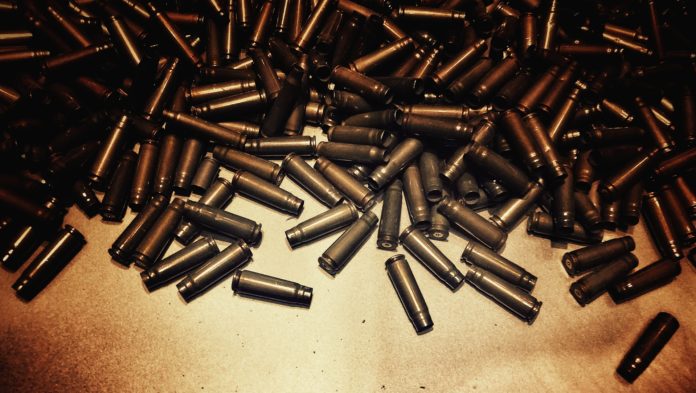The Department of Defence is set to spend €6.2 million on contributions to the European Peace Facility this year, despite initially indicating that the funding was allocated to supporting work in Ireland and to overseas peace support operations.
New documents released to the Peace and Neutrality Alliance (PANA) under Freedom of Information show that the Department of Defence sought increased funding only for the European Peace Facility, Army Pensions, and the Brexit Adjustment Reserve in this year’s budget, as the increased costs of pay agreements and the National Development Plan had already been agreed.
The department initially sought an increase of €4 million for the European Peace Facility before writing to the Department of Public Expenditure and Reform explaining that they had made an error and were actually seeking €5 million, on top of €1.2m allocated the previous year.
In briefing to the Minister for Defence on 5 October, officials in the department stated that they had managed to secure €17 million in extra current funding “to meet the anticipated additional pay agreement costs of approx. €11 million, plus additional European Peace Facility contributions of €5 million and €1 million in other current costs.”
Broad mandate
The European Peace Facility (EPF) is a €5.7 billion fund which runs for the period 2021 to 2027 alongside the EU budget. It incorporates and replaces the Athena Mechanism, used to fund the costs of EU military missions, and the African Peace Facility, which supported African-led military operations, and expands on their scope and geographic coverage.
The EPF marks the first time that the EU has the power to use common funds to provide assistance measures aimed at strengthening third party states’ defence and military capabilities, including the provision of lethal military equipment.
Last October, the European Peacebuilding Liaison Office (ELPO), whose member organisations include Oxfam International and Christian Aid Ireland, questioned the “necessity and added value” of the EPF. The EPLO was concerned that the EPF could, “despite its name, cause harm to civilians, exacerbate existing tensions and fuel violations of international humanitarian law and international human rights law in conflict-affected settings.”
A year earlier, a Joint Civil Society Statement pointed out that the EPF would rely on the current EU arms exporting legal framework. Although the rules mean that EU member states have an obligation to deny arms export licences when there is a risk the arms will be used for human rights violations, there are “systematic failures in the implementation of this rule, resulting in frequent transfers of European arms to repressive regimes such as Egypt or Saudi Arabia. Relying solely on these rules in the context of the EPF is therefore clearly insufficient and will likely result in further arms transfers without ensuring respect for EU law and Member States’ human rights obligations.”
Budget 2022
The EPF committee agreed in July 2021 to a payments ceiling in 2022 of €596 million, including a flexibility margin of €81 million. According to the documents, there is an “Irish contribution level of approx. 2%”. This would mean €10.8 million was allocated to the EPF this year, split between the Department of Defence and Department of Foreign Affairs, though neither department provided much detail at the time.
The Revised Estimates for Public Services 2022 was published on 15 December last year and indicates that “costs arising directly from Ireland’s participation in the EU’s Common Security and Defence Policy” increased by €5 million to €7 million from 2021 to 2022.
“However, when we tried to find out what that was made up of, there was no further information,” says Tom Crilly, spokesperson for PANA. “We went back to the budget but there was no more information there.”
The Expenditure Report 2022, published on budget day in October, makes no reference to Common Security and Defence Policy or the European Peace Facility. It merely states that the increased €27 million the Department of Defence got for 2022 provides for commitments arising from the Building Momentum pay agreement and that “other non-pay current expenditure has increased by €6m to €150m and will allow the PDF to continue to meet all Government approved Aid to the Civil Power (ATCP) and Aid to the Civil Authority (ACA) requests, as well as meeting Government requirements for overseas peace support operations.”
Aid to the Civil Power and Aid to the Civil Authority refer to the Defence Forces’ role in supporting other departments in the event of a natural disaster or emergency situation or providing support for the Gardaí.
The press release published on the same day states that the additional funding “will ensure that the Defence organisation can continue on White Paper on Defence commitments”, referencing ongoing pay and allowances, Civil Defence, and pensions.
“We thought this was somewhat peculiar,” said Crilly. “So we submitted the FOI request.”
Increasing costs
“If the total cost [of the EPF] is €5.7bn, then Ireland would be expected to pay in about €114m over the seven years,” said Crilly.
“PANA is particularly upset and annoyed by the information revealed by our FOI request. In the first instance, it demonstrates that there was a complete lack of transparency in the way the Department of Defence, and by extension the entire government, dealt with the allocation of Irish exchequer funds for the EPF.
“Furthermore, the revelation that we may be liable to pay in the region of €114 million to the EPF over a seven year period means that this is just the tip of the iceberg. If we have to pay the remaining €95 million over the next five years, we could be paying out almost €23 million by 2027. Frankly, this is a scandalous waste of money.”
While the Programme for Government, negotiated in 2020, states that “within the context of the European Peace Facility, Ireland will not be part of decision-making or funding for lethal force weapons for non-peacekeeping purposes”, it has not been clarified to date if this reduces the EU’s total spend on weapons or leads to a simple reclassification of expenditure.





